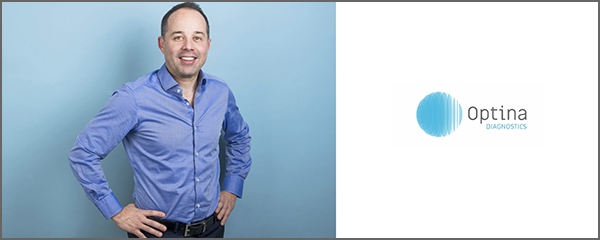| DEALFLOWUPDATE Issue #43. Friday, October 25 |
Hello Everyone, For this edition of the Zoic newsletter, we’ll be featuring technologies and companies that are all focused on cancer. Cancer is such a large potential market, with massive amounts of investment and research grants available. Our investments have somewhat touched this space, but is it possible to have an innovative, impactful approach to cancer and still have a shorter-term exit? These technologies show how that is possible. Diagnostics are often an answer, but there are many ways to approach a new detection technology. In addition to our deal flow report, we cover Zoic Senior Advisor, Rick Cesari’s new book on direct marketing using video persuasion, and respond to a common question we receive regarding Premarket Approvals vs. 510k exits. -Neal If this is your first issue, please subscribe and consider sharing with others. Additionally, we welcome news from our readers, if you’re up to something interesting, let us know. Email chad@zoiccapital.com |
Dealflow Is it possible to have an innovative, impactful approach to cancer and still have a shorter-term exit? Cancer is such a large potential market, with massive amounts of investment and research grants available. Our investments have somewhat touched this space, but is it possible to have an innovative, impactful approach to cancer and still have a shorter-term exit? These technologies show how that is possible. Diagnostics are often an answer, but there are many ways to approach a new detection technology. Our first technology is a new tracer agent that can be used to much more accurately track pancreatic cancer and lung disease. New imaging modalities and tracers are diagnostic methods that can have a significant impact on cancer due to finding cases much earlier and more accurately than before. Furthermore, although the performance benefits are a major change, they still use existing devices such as PET or MRI, meaning hospitals don’t have to buy new equipment or new training has to take place, always inhibitors of adoption. Another example of diagnostics are non-invasive tests; one of the most impactful in recent history is Cologuard. This is a non-invasive tests that uses a stool sample to detect colon cancer early. This article shows how such a technology can be placed on the market early, even though follow-on studies such as the one featured may need to take place for many years after. This particular study is to show, in a long-term review, if the diagnostic actually detects colon cancer very early. In many cases, a diagnostic does not require a very lengthy regulatory process, especially if it is non-invasive or uses existing devices like the previous examples. However, cancer diagnostics can also be difficult, because they are trying to detect a potentially life-threatening condition, the regulatory requirements can be high. The FDA, though, as mentioned before, does offer the breakthrough status for diagnostics that can address the severe need for early detection, such as in this case with prostate cancer. In another example of a new imaging agent, a startup has partnered with GE Healthcare in a co-development agreement. This is also for prostate cancer and shows another benefit of developing new tracers and agents; development deals with large companies like GE. This helps the startup with sharing or even completely paying for development, and gives the potential acquirer a major competitive advantage by securing a unique tracer for early detection. Lastly, we’ll be looking at therapeutics. We typically don’t look at therapeutics, especially cancer therapeutics because of the long development and regulatory approval times. However, there are more and more cases of cancer therapeutics either being acquired early or, just like the previous example, having a development deal signed with a pharmaceutical company. For example, a deal recently between Novogene and the developer of an inhibitor of tumor activity. This is especially important because such a deal can mean a potential exit or substantial risk reducer for investors. News  Rick Cesari, a pioneer in direct response marketing strategies for over 30 years, recently released a new book titled, Video Persuasion. Here at Zoic, we found Rick’s incite on using video to build better brands not only resourceful for those building and growing a business and brand, but also strategic in its explanation of the importance of video and customer feedback. As we all know, video is a very effective method of either creating value for a brand or simply just noise. To successfully appeal to a target audience to create higher ROI, understanding and implementing the offer using effective strategies is key. You can find the book here on Amazon. Congratulations to our portfolio company, Optina Diagnostics, on securing a partnership with the Montreal Heart Institute to develop a new biomarker for Atherosclerosis.The partnership between Optina Diagnostics and the Montreal Heart Institute was established following a proof of concept study that demonstrated the great potential of Optina’s Retinal Deep Phenotyping platform in the detection of atherosclerosis. “Our main objective is to provide retinal biomarker information to allow for the characterization of patients suffering from memory loss in a non-invasive manner,” said David Lapointe, CEO Optina Diagnostics. Optina Diagnostics is a Montreal-based company focused on changing mindsets when it comes to brain health. With a first application in the early detection of Alzheimer’s and an FDA Breakthrough Device Designation for its Hyper-spectral camera, Optina challenges the status quo by providing an accurate, simple, and non-invasive optical test to understand the age-related sources of memory loss, empowering millions. optinadx.com Press Release  David Lapointe, CEO Optina Diagnostics Q&A with Zoic Capital Quite often we receive reader questions regarding deal flow, device diagnostics, regulation, trends, etc. What is your perspective regarding PMA vs 510k exits? In regards to this question, at least in our opinion, in general, PMA exits are larger in magnitude than 510k exits. However, there are 3 major exceptions that we see, mostly in cases where more than a 510k is not necessary and an exit will occur as a follow-on to the initial application: 1. There are some rare cases where the market potential is massive and there is no need for more than a 510k for a solution. For example, one of our portfolio companies has a therapy that can actually treat the underlying cause of venous leg ulcers and is still a 510k due to using existing materials. An exit here might even be possible during the clinical trial, rare for devices. 2. A platform where a 510k is an initial entry point into gathering data, which is the much larger exit. For example, one of the companies we are investing in now has a short 510k path to getting an implanted brain sensor, and from there the company will gather a massive amount of brain data, which can then be exited in both medical and consumer spaces. 3. Lastly, a platform that does not require either 510k or PMA, such as diagnostics. For example, we have one portfolio company that does not require FDA approval, as it is targeting the consumer space, and another that only requires a CLIA lab (like many other diagnostic startups). Following the initial application, there may be indications that require a 510k, but those build on the initial application’s success. Of course, there are also PMAs that are breakthrough designations (one of our portfolio companies is that case), which are the best of both worlds. *We welcome questions from our readers, feel free to ask by sending an e-mail to chad@zoiccapital.com What We’re Reading QUARTZ Ancestry’s Genetic Tests Can Now Tell You About Your Health FORBES Explainable AI In Health Care: Gaining Context Behind A Diagnosis SCIENMAG Can We Enable More Effective Medical Imaging In Poorer Nations? NO MERCY / NO MALICE MARGINal: The Shift to Margin Focus Connect With Zoic Capital |
| The Biweekly Dealflow Update, curated by the team at Zoic Capital. |

Blog
Innovative and Impactful Approach to Cancer
© 2025 Zoic Capital.
Close Menu
Contact Us
113 Cherry St.
PMB 2981
Seattle, WA 98104-2205
E: hello [at] zoiccapital.com

